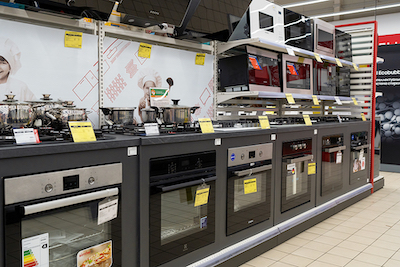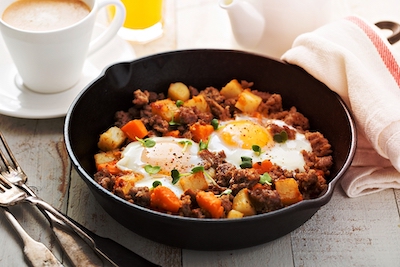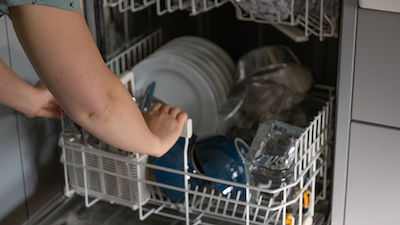The choice of cooktops plays a crucial role in the efficiency, safety, and ease of use in modern kitchens. Induction, gas, and electric cooktops are the three main types of stovetops available on the market today, each with its own unique features, benefits, and drawbacks. In this article, we will provide an in-depth comparison between induction, gas, and electric cooktops to help you make an informed decision when selecting the best cooking solution for your needs.
- How They Work
A. Induction Cooking
Induction cooktops rely on the principle of electromagnetic induction, which uses magnetic fields to generate heat directly in the cookware. This technology requires cookware made of ferromagnetic materials, such as cast iron or stainless steel. When the cookware is placed on the induction surface, the magnetic field generates an electric current in the pot, which, in turn, produces heat for cooking. Since the heat is generated directly in the cookware, the cooktop itself remains cool to the touch.
B. Gas Cooking
Gas cooktops use natural gas or propane as a fuel source. When the gas is turned on, it mixes with the air, and the resulting mixture is ignited by an electric spark or a pilot flame, creating a continuous flame. The heat from the flame is then transferred to the cookware, which in turn heats the food.
C. Electric Cooking
Electric cooktops use electricity to generate heat, either through resistive heating elements or infrared radiation. In the case of resistive heating elements, such as those found in coil or solid disk cooktops, the electric current heats the element, which then transfers heat to the cookware. Infrared cooktops, on the other hand, use a halogen bulb to generate heat, which is transferred to the cookware through radiation.
- Energy Efficiency
A. Induction Cooking
Induction cooktops are considered the most energy-efficient option among the three. Since the heat is generated directly in the cookware, there is minimal heat loss compared to gas and electric cooktops. In fact, induction cooktops can achieve up to 90% energy efficiency, meaning that 90% of the energy used is converted into heat for cooking.
B. Gas Cooking
Gas cooktops have an energy efficiency of around 40-60%, with the higher end being achieved by modern models with advanced features like sealed burners. The main reason for this relatively lower efficiency is that a significant portion of the heat generated by the gas flame is lost to the surrounding air, rather than being absorbed by the cookware.
C. Electric Cooking
Electric cooktops, particularly those with resistive heating elements, have an energy efficiency of around 70-80%. Infrared cooktops tend to be more efficient, reaching up to 85%. The efficiency of electric cooktops is mainly determined by the quality of the heating element and the heat transfer between the cooktop and the cookware.
- Cooking Performance
A. Induction Cooking
Induction cooktops are known for their fast and precise temperature control. They can reach high temperatures quickly, and the heat can be adjusted instantly, providing precise control over the cooking process. This makes induction cooktops ideal for delicate tasks like simmering or melting chocolate, as well as high-heat applications like searing or stir-frying.
B. Gas Cooking
Gas cooktops are praised for their responsiveness and even heat distribution. The ability to see and adjust the flame allows for precise control over the cooking process. Gas cooktops are well-suited for a variety of cooking techniques, including high-heat applications like searing and stir-frying, as well as simmering and gentle cooking. They also work well with a wide range of cookware materials, including non-magnetic options like aluminum and copper.
C. Electric Cooking
Electric cooktops, particularly those with resistive heating elements, are generally slower to heat up and cool down compared to induction and gas cooktops. This may lead to less precise temperature control, which can be a challenge for delicate cooking tasks. However, infrared cooktops offer better responsiveness and heat distribution, making them more suitable for various cooking techniques.
- Safety
A. Induction Cooking
Induction cooktops are considered the safest option among the three due to their unique heating mechanism. Since the heat is generated directly in the cookware, the cooktop surface remains relatively cool to the touch, reducing the risk of burns. Additionally, induction cooktops automatically turn off when the cookware is removed from the surface, preventing accidental burns and energy waste.
B. Gas Cooking
Gas cooktops come with certain safety risks, such as gas leaks, open flames, and potential carbon monoxide exposure. To mitigate these risks, modern gas cooktops are equipped with safety features like flame failure protection, which automatically shuts off the gas supply if the flame goes out. Proper ventilation and regular maintenance are essential for ensuring the safe operation of gas cooktops.
C. Electric Cooking
Electric cooktops are generally safe, with no open flames or gas leaks to worry about. However, the heating elements can remain hot for a while after they are turned off, posing a burn risk. Some electric cooktops come with residual heat indicators, which alert users when the cooktop surface is still hot.
- Installation and Maintenance
A. Induction Cooking
Induction cooktops require a dedicated electrical circuit and can be installed in most kitchens with relative ease. They feature a smooth, easy-to-clean surface, which makes maintenance a breeze. However, induction cooktops may require users to invest in compatible cookware made of ferromagnetic materials.
B. Gas Cooking
Gas cooktop installation requires access to a gas line, which may limit the options for some homeowners. They also need proper ventilation to ensure the safe operation and removal of combustion byproducts. Maintenance-wise, gas cooktops require regular cleaning of the burners and grates, which can be more labor-intensive compared to induction and electric cooktops.
C. Electric Cooking
Electric cooktops are relatively easy to install, requiring a dedicated electrical circuit. Coil and solid disk cooktops can be more challenging to clean, with crevices and grooves that can collect spills and debris. Infrared cooktops, on the other hand, feature a smooth surface that is easy to clean and maintain.
When choosing between induction, gas, and electric cooktops, it is essential to consider factors such as energy efficiency, cooking performance, safety, installation, and maintenance. Induction cooktops offer excellent energy efficiency, precise temperature control, and safety features, making them a popular choice for modern kitchens. Gas cooktops provide a responsive and versatile cooking experience, while electric cooktops offer a range of heating options with varying levels of performance and ease of use.
Ultimately, the best cooktop for your needs will depend on your personal preferences, cooking habits, and budget constraints. By carefully weighing the pros and cons of each cooktop type, you can make an informed decision that will enhance your cooking experience and bring convenience and efficiency to your kitchen.













